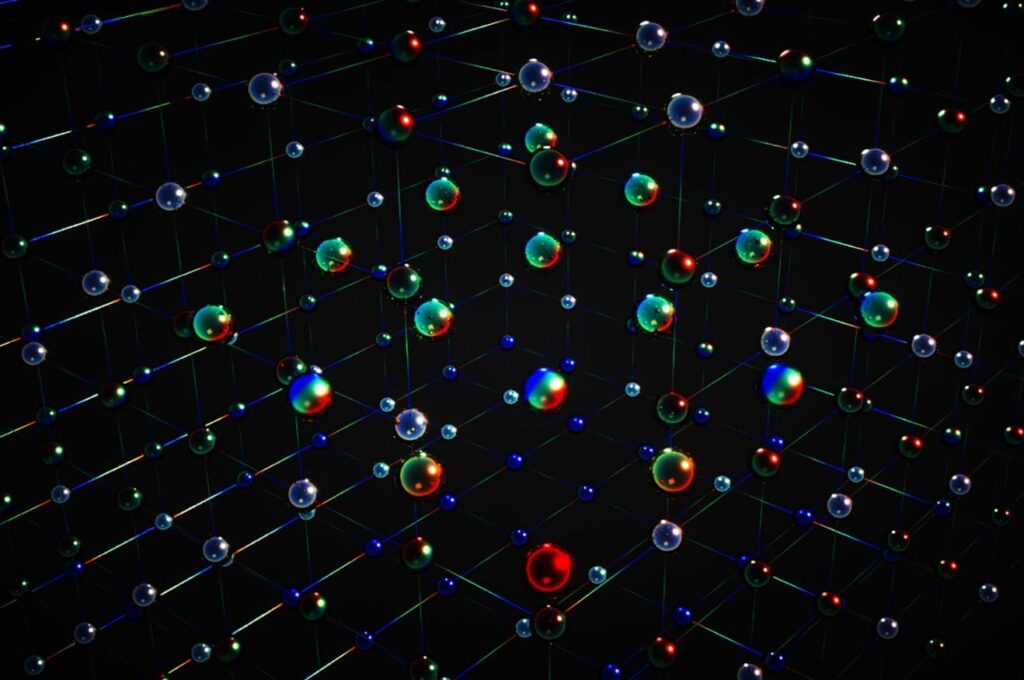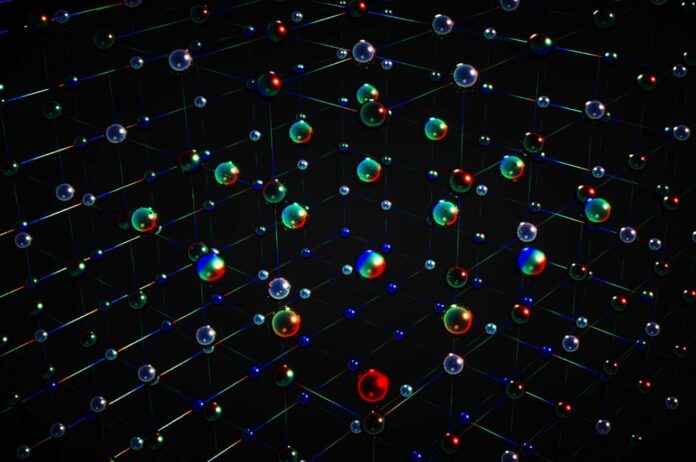Using atoms nearly 3 billion times colder than interstellar space, physicists in the US and Japan have unlocked a previously unexplored realm of quantum magnetism.
“Unless an alien civilization is doing experiments like these right now, anytime this experiment is running at Kyoto University it is making the coldest fermions in the universe,” remarks Rice University’s Kaden Hazzard, corresponding theory author of the paper published today in Nature Physics. “Fermions are not rare particles. They include things like electrons and are one of two types of particles that all matter is made of.”
Fermions are atoms of ytterbium. A team in Kyoto led by the study’s author, Yoshiro Takahashi, used lasers to cool ytterbium atoms to within a billionth of a degree of absolute zero, the temperature where all motion stops. That makes it around three billion times cooler than interstellar space, which is still warmed by the afterglow from the Big Bang.
“The payoff of getting this cold is that the physics really changes,” Hazzard adds. “The physics starts to become more quantum mechanical, and it lets you see new phenomena.”
Atoms, like electrons and photons, follow the rules of quantum dynamics, but you can only see their quantum behaviors when they are cooled to within a fraction of a degree of absolute zero. For more than 25 years, physicists have utilized laser cooling to investigate the quantum characteristics of ultracold atoms. Lasers are used to cool the atoms and stop them from moving outside of optical lattices, which are 1D, 2D, or 3D channels of light that can be used as quantum simulators to solve problems that are too hard for regular computers to handle.

The Hubbard model, a popular quantum model proposed in 1963 by theoretical physicist John Hubbard, was simulated by Takahashi’s group using optical lattices. Hubbard models are used by physicists to study the magnetic and superconducting properties of materials, particularly those where electron interactions result in collective behavior, similar to the collective interactions of cheering sports fans who execute “the wave” in packed stadiums.
“The thermometer they use in Kyoto is one of the important things provided by our theory,” adds Hazzard. “Comparing their measurements to our calculations, we can determine the temperature. The record-setting temperature is achieved thanks to fun new physics that has to do with the very high symmetry of the system.”
The special symmetry of the Hubbard model that was simulated in Kyoto is known as SU(N), where SU refers for special unitary group, a mathematical term for the symmetry, and N stands for the potential spin states of particles in the model. The model’s symmetry and the intricacy of the magnetic behaviors it predicts increase with the value of N. There are six possible spin states for ytterbium atoms, and the Kyoto simulator is the first to show magnetic correlations in an SU(6) Hubbard model, which computers can’t calculate.
“That’s the real reason to do this experiment,” says Hazzard. “Because we’re dying to know the physics of this SU(N) Hubbard model.”
Eduardo Ibarra-Garca-Padilla, a graduate student in Hazzard’s research group and co-author of the study, said that the Hubbard model tries to explain why solids can be metals, insulators, magnets, or superconductors with the fewest possible factors.
The importance of symmetry is “one of the fascinating questions that experiments can explore,” according to Ibarra-Garca-Padilla. It is incredible to have the ability to engineer it in a lab. Understanding this could help us create actual materials with the desired qualities.
As demonstrated by Takahashi’s group, the 3D lattice can hold up to 300,000 atoms. Hazzard claimed that even the most potent supercomputers cannot reliably predict the behavior of even a dozen particles in an SU(6) Hubbard model. The Kyoto experiments provide physicists an opportunity to observe these intricate quantum systems in operation and learn how they function.
The findings, which include the first observations of particle coordination in an SU(6) Hubbard model, are a significant step in this direction, according to Hazzard.
“Right now this coordination is short-ranged, but as the particles are cooled even further, subtler and more exotic phases of matter can appear,” he explains. “One of the interesting things about some of these exotic phases is that they are not ordered in an obvious pattern, and they are also not random. There are correlations, but if you look at two atoms and ask, ‘Are they correlated?’ you won’t see them. They are much more subtle. You can’t look at two or three or even 100 atoms. You kind of have to look at the whole system.”
In the Kyoto experiment, physicists lack the means to measure such behavior. But Hazzard said that work is already being done to make the tools, and the success of the Kyoto team will give them a boost.
“These systems are pretty exotic and special, but the hope is that by studying and understanding them, we can identify the key ingredients that need to be there in real materials,” he adds.
Image Credit: Ella Maru Studio/Courtesy of K. Hazzard/Rice University
You were reading: Universe’s Coldest Fermions Open Portal To New Phenomena
